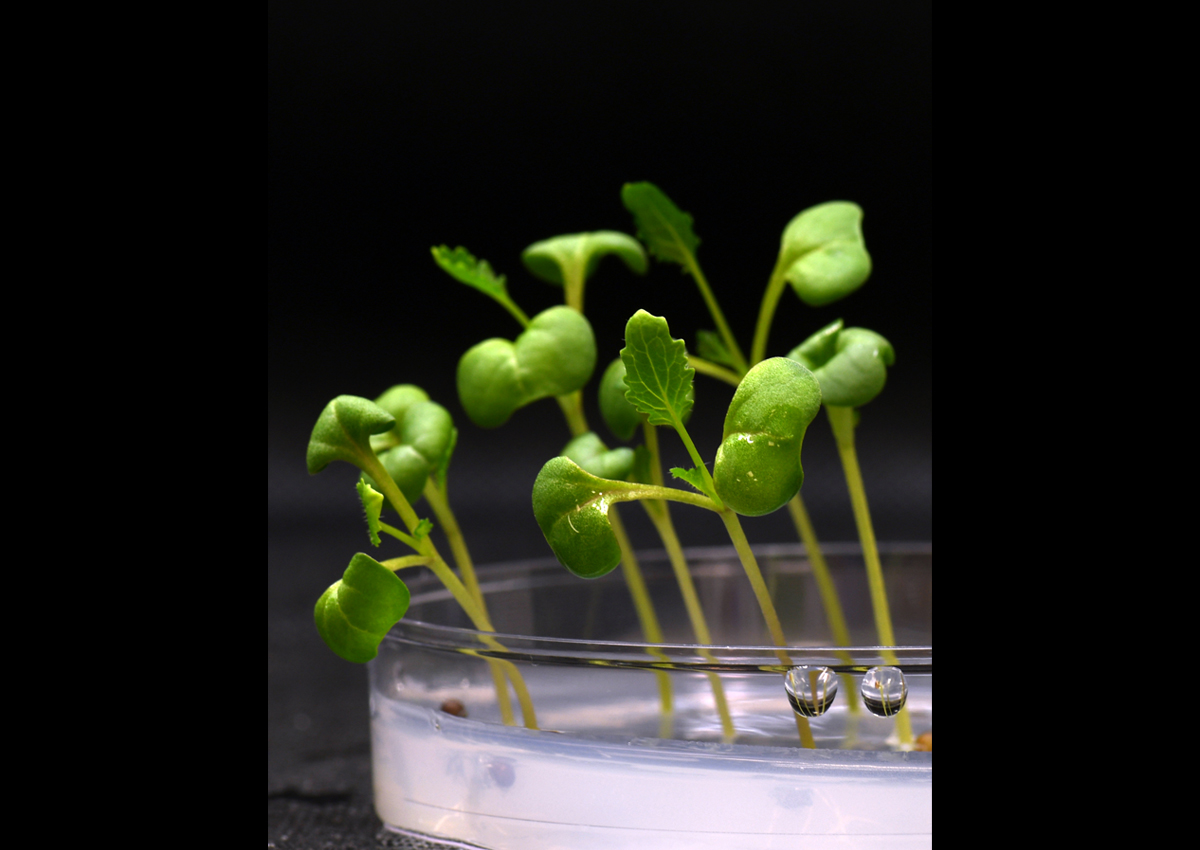
Artificial Photosynthesis Produces Food without Sunshine
July 6, 2022| |
Scientists from the University of California, Riverside, and the University of Delaware have found a way to bypass biological photosynthesis and create food without sunlight by using artificial photosynthesis.
The research team used a two-step electrocatalytic process to convert carbon dioxide, electricity, and water into acetate, the form of the main component of vinegar. Food-producing organisms then consumed acetate in the dark to grow. Using solar panels to generate the electricity to power the electrocatalysis, this hybrid organic-inorganic system could increase the conversion efficiency of sunlight into food by up to 18 times more efficient for some foods.
Their experiments showed that food-producing organisms can be grown in the dark on the acetate-rich electrolyzer output, including green algae, yeast, and fungal mycelium that produce mushrooms. Producing algae with this technology is approximately four-fold more energy efficient than growing it photosynthetically. Yeast production is about 18-fold more energy efficient than how it is typically cultivated using sugar extracted from corn.
Scientists are now looking at the potential of using this technology to grow crop plants. Cowpea, tomato, tobacco, rice, canola, and green pea were all able to use carbon from acetate when grown in the dark.
For more details, read the article in UC Riverside News.
| |
You might also like:
- Scientists Resurrect Ancient Rubisco to Improve Photosynthesis
- Discovery Ends Long-Standing Photosynthesis Controversy
- Scientists Unravel Mystery of Photosynthesis
Biotech Updates is a weekly newsletter of ISAAA, a not-for-profit organization. It is distributed for free to over 22,000 subscribers worldwide to inform them about the key developments in biosciences, especially in biotechnology. Your support will help us in our mission to feed the world with knowledge. You can help by donating as little as $10.
-
See more articles:
-
News from Around the World
- Artificial Photosynthesis Produces Food without Sunshine
- Agbiotech Advocate is 2022 CSSA Awardee
- Study Asks Farmers: Is Implementing a Biotech Ban Correct or Not?
- Field Trial for GM Sorghum in Australia Now Approved
- ISAAA Inc. Leads Science Communication Advocacy Through Social Media for PH Biotech Stakeholders
- Workshop to Explore Policy Considerations for Gene Editing in Asia and Australia
-
Research Highlights
- Altered Gene Triggers Photosynthetic Overdrive to Increase Plant Economic Value and Fight Climate Change
- Molecular Players in Early Attack of Sclerotinia Stem Rot on Soybean Identified
-
Read the latest: - Biotech Updates (December 17, 2025)
- Gene Editing Supplement (December 17, 2025)
- Gene Drive Supplement (February 22, 2023)
-
Subscribe to BU: - Share
- Tweet

